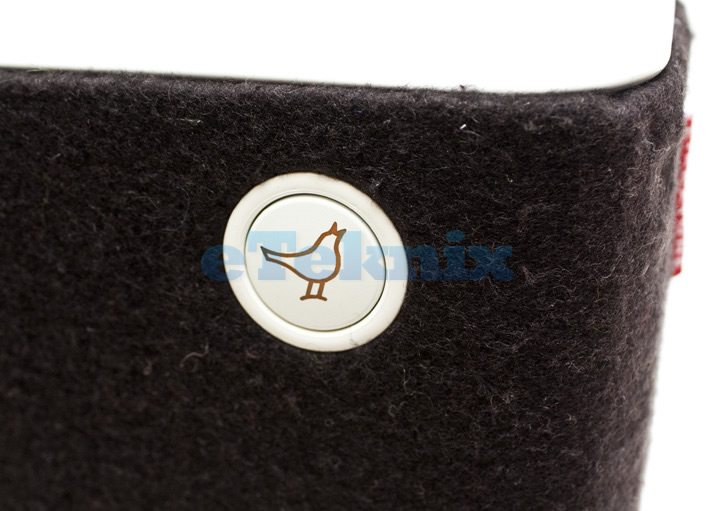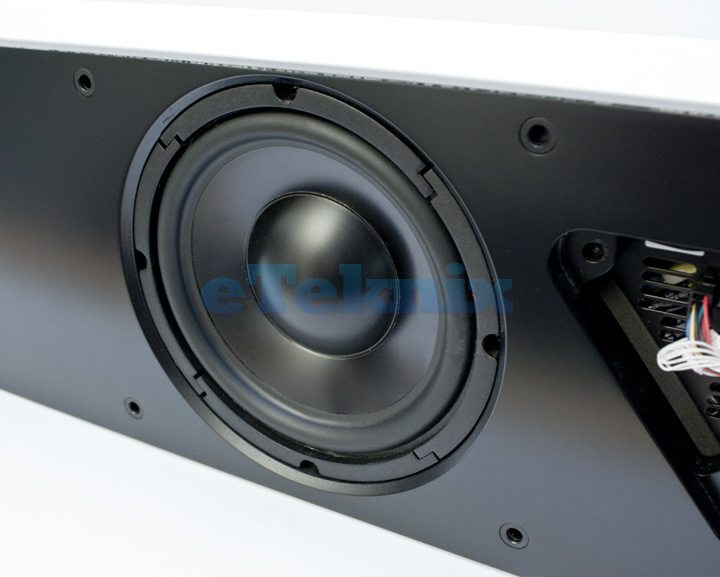Libratone Lounge Speaker Review
Tim Mammatt / 12 years ago
The Libratone Lounge comes in a huge box, over a meter in length. The graphics are fairly simple, with just an image of the speaker on the front and some basic information on the back.

Once unpacked, the contents include a wall mount, European and UK plug, 3.5mm audio jack, optical to 3.5mm audio jack on top of the usual setup and owner manuals.

Out of the box, you are presented with a very contemporary, typical Scandinavian designed speaker. There are no features that stand out, except for the small button located at the top right of the speaker. The front and sides are wrapped in an Italian cashmere wool, which is available in different colours, our sample just happened to be black.

On closer inspection of the right side of the speaker, you can see the level of detail that has gone into the design with the red label and white stitching.

The button, which also features Libratone’s logo, lights up orange when first turned on. We’ll talk about this more when we connect the speaker to our router.

This side angle shows how slim the speaker is in comparison to it’s width.

The underneath of the Lounge is covered in a foam material to stop any movement and reduce vibrations. Towards the centre of the base is the connection for the power and 3.5mm audio jack, as well as the power button. What is odd about this, is that the button is actually hidden by the power cable when connected. This means you have to tilt the speaker to get better access to the switch, or just unplug the power first, but that defeats the point surely?

Behind the luxurious skin, the unit is made up of two 2x25W tweeters, 2x25W midrange speakers and 1x50W Amp giving a combined total of 150W.

A close up of the 50W 8″ inverted sub woofer that’ll pack a fair punch when it comes to bass.

The Lounge features 2x 4″, 25W ceramic midrange speakers (bottom of photo) and 2x 1″, 25W ribbon tweeters (top of photo).

You may have noticed a distinctive lack of controls, this is because the speaker will make use of an app that we’ll take a look at next.



















